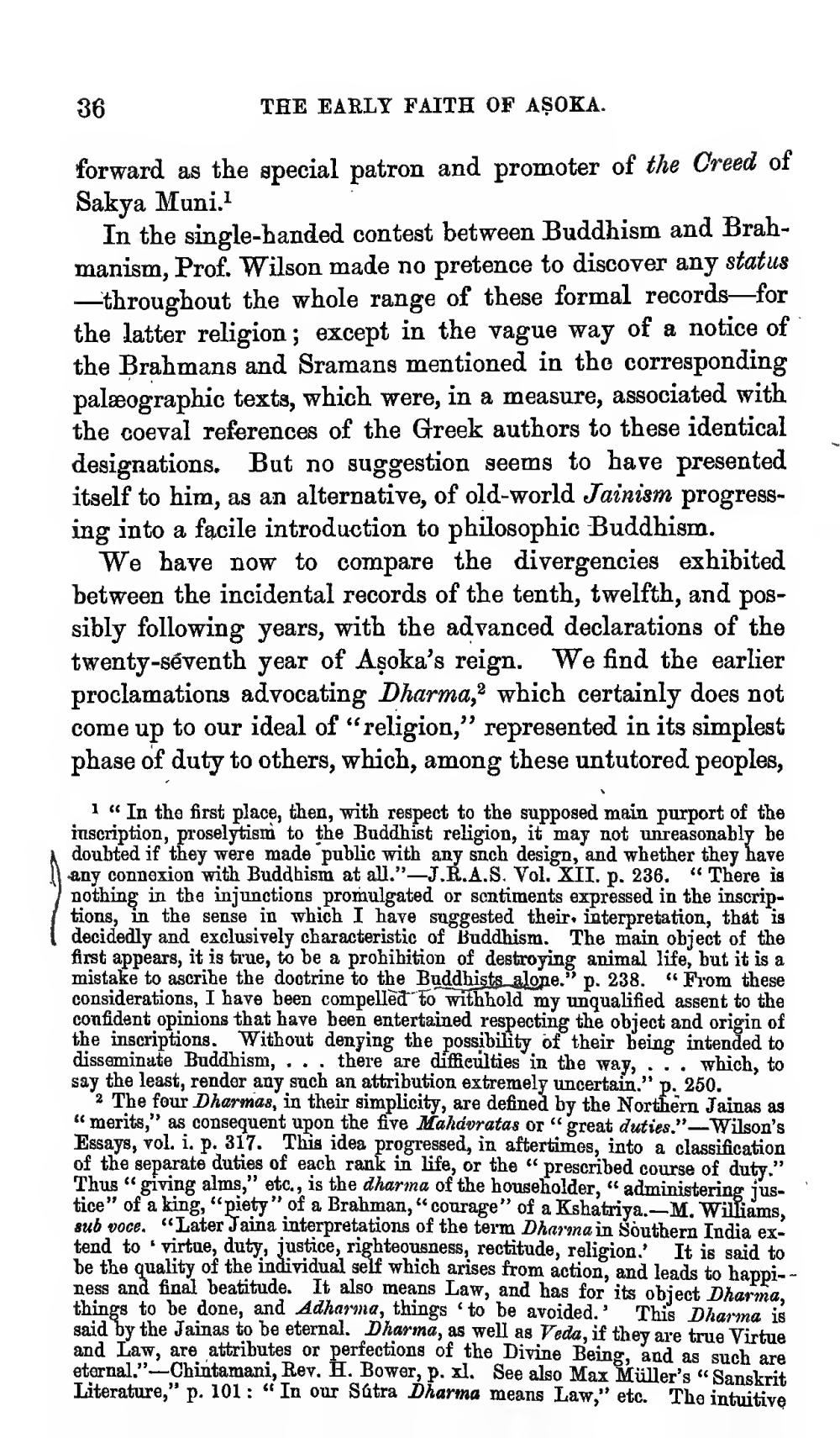________________
36
THE EARLY FAITH OF AŞOKA.
forward as the special patron and promoter of the Creed of Sakya Muni.
In the single-handed contest between Buddhism and Brahmanism, Prof. Wilson made no pretence to discover any status
—throughout the whole range of these formal records—for the latter religion ; except in the vague way of a notice of the Brahmans and Sramans mentioned in the corresponding palæographic texts, which were, in a measure, associated with the coeval references of the Greek authors to these identical designations. But no suggestion seems to have presented itself to him, as an alternative, of old-world Jainism progressing into a facile introduction to philosophic Buddhism.
We have now to compare the divergencies exhibited between the incidental records of the tenth, twelfth, and possibly following years, with the advanced declarations of the twenty-séventh year of Aşoka's reign. We find the earlier proclamations advocating Dharma,? which certainly does not come up to our ideal of "religion,” represented in its simplest phase of duty to others, which, among these untutored peoples,
1 “In the first place, then, with respect to the supposed main purport of the inscription, proselytism to the Buddhist religion, it may not unreasonably be doubted if they were made public with any such design, and whether they have any connexion with Buddhism at all."-J.R.A.S. Vol. XII. p. 236. “There is nothing in the injunctions promulgated or sentiments expressed in the inscriptions, in the sense in which I have suggested their interpretation, that is decidedly and exclusively characteristic of Buddhism. The main object of the first appears, it is true, to be a prohibition of destroying animal life, but it is a mistake to ascribe the doctrine to the Buddhists_alone. p. 238. “From these considerations, I have been compelled to withhold my unqualified assent to the confident opinions that have been entertained respecting the object and origin of the inscriptions. Without denying the possibility of their being intended to disseminate Buddhism, ... there are difficulties in the way, ... which, to say the least, render any such an attribution extremely uncertain." p. 250.
2 The four Dharmas, in their simplicity, are defined by the Northern Jainas as « merits," as consequent upon the five Mahdvratas or great duties." --Wilson's Essays, vol. i. p. 317. This idea progressed, in aftertimes, into a classification of the separate duties of each rank in life, or the “prescribed course of duty." Thug “ giving alms," etc., is the dharma of the householder, "administering tice" of a king, "piety" of a Brahman,"courage" of a Kshatriya.-M. Williams, sub voce. "Later Jaina interpretations of the term Dharma in Southern India extend to virtue, duty, justice, righteousness, rectitude, religion. It is said to be the quality of the individual self which arises from action, and leads to happiness and final beatitude. It also means Law, and has for its object Dharma, things to be done, and Adharma, things to be avoided.' This Dharma is said by the Jainas to be eternal. Dharma, as well as Veda, if they are true Virtue and Law. are attributes or perfections of the Divine Being, and as such are eternal." Chintamani, Rev. H. Bower, p. xl. See also Max Müller's “Sanskrit Literature," p. 101: “In our Sutra Dharma means Law," etc. The intuitive




